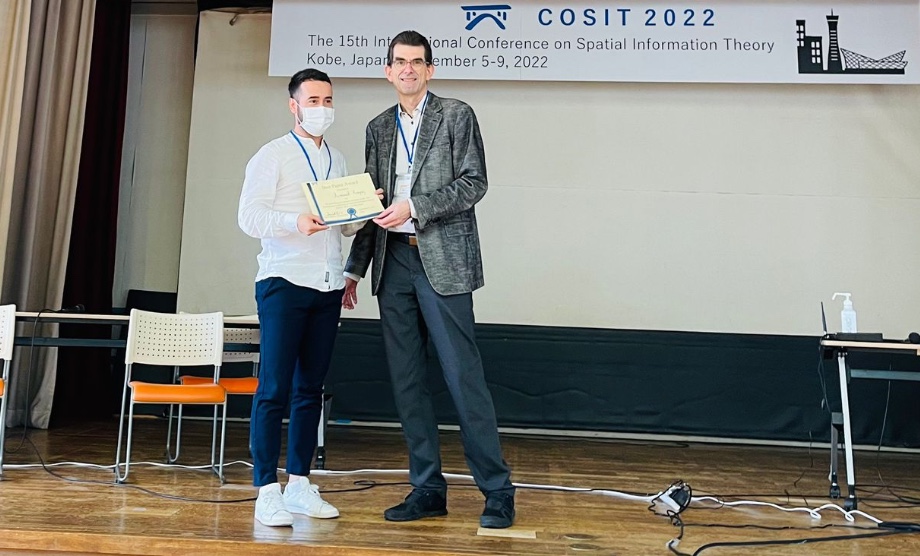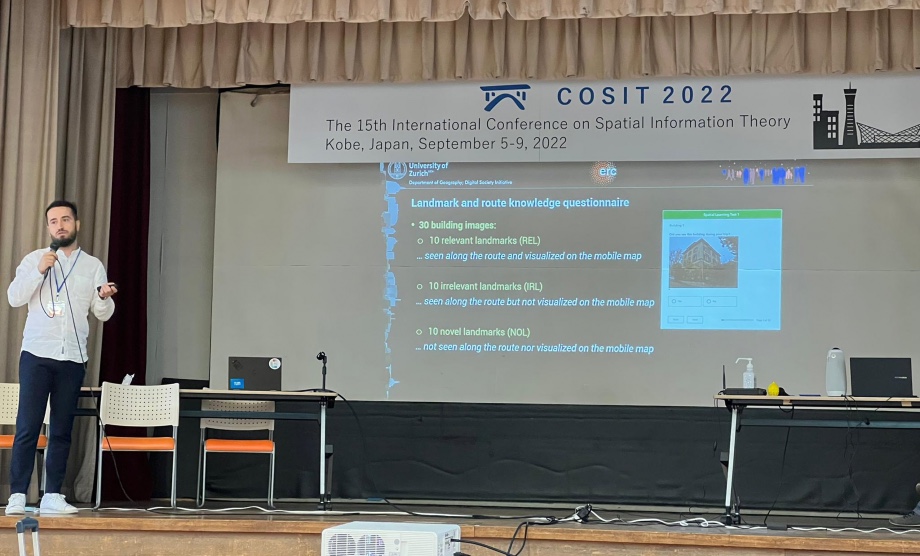COSIT 2022: Best Short Paper Award
The Effect of Abstract vs. Realistic 3D Visualization on Landmark and Route Knowledge Acquisition
Armand Kapaj got the Award for the "Best Short Paper" at the 15th International Conference on Spatial Information Theory

Armand Kapaj, Enru Lin, and Sara Lanini-Maggi
Abstract
Even though humans perform it daily, navigation is a cognitively challenging process. Landmarks have been shown to facilitate navigation by scaffolding humans’ mental representation of space. However, how landmarks can be effectively communicated to pedestrians to support spatial learning of the traversed environment remains an open question. Therefore, we assessed how the visualization of landmarks on a mobile map (i.e., abstract 3D vs. realistic 3D symbols) influences participants’ spatial learning, visual attention allocation, and cognitive load during an outdoor map-assisted navigation task. We report initial results on how exposing pedestrians to different landmark visualization styles on mobile maps while navigating along a given route in an urban environment can have differing effects on how they remember landmarks and routes. Specifically, we find that navigators better remember landmarks visualized as 3D realistic-looking symbols compared to 3D abstract landmark symbols on the mobile map. The pattern of results shows that displaying realistic 3D landmark symbols at intersections potentially helps participants to remember route directions better than with landmarks depicted as abstract 3D symbols. The presented methodological approach contributes ecologically valid insights to further understand how the design of landmarks on mobile maps could support wayfinders’ spatial learning during map-assisted navigation.
